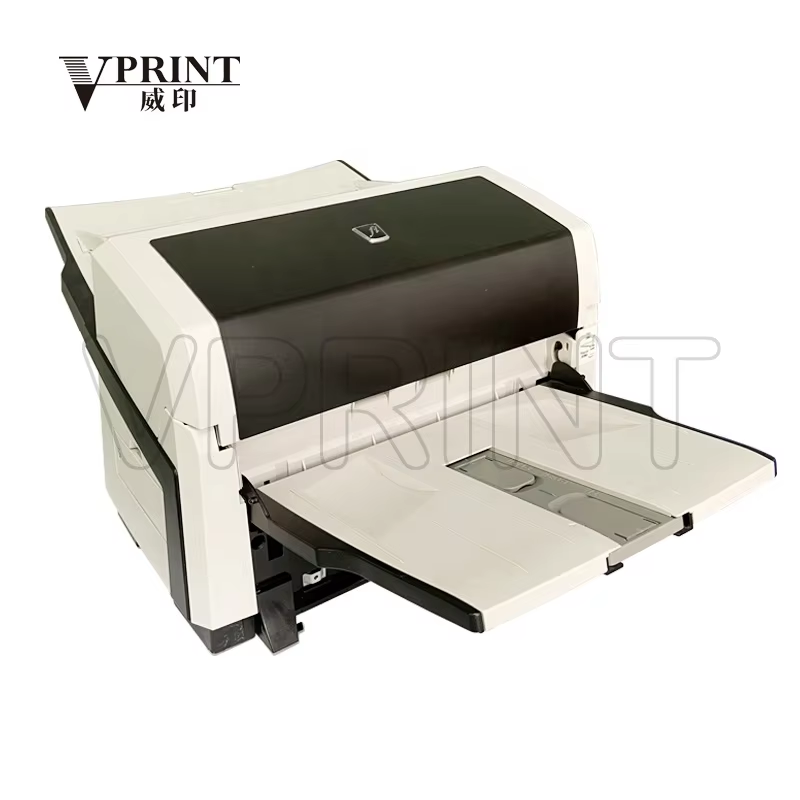Ultimate Checklist for Choosing a Scanner
Choosing the right scanner is essential for businesses and individuals who rely on digital documentation, high-quality imaging, and efficient workflow. Vprintech, founded in 2013, is a leading manufacturer and exporter of digital device spare parts and consumables, serving clients in over 80 countries. With more than a decade of industry experience, Vprintech provides reliable solutions for scanners and related equipment, offering over 10,000 products, including Fuser units, Formatter Boards, Transfer Belts, Pickup Rollers, Toners, Drum Units, and more.
Selecting the right scanner ensures optimal performance, compatibility with existing devices, and improved productivity. Vprintech’s extensive expertise guarantees that businesses can choose scanners and consumables that meet their specific operational needs.
Understanding Scanners
What a Scanner Does
Scanners convert physical documents, photos, and images into digital formats for storage, editing, or sharing. They are essential in offices, schools, medical facilities, and production environments.
Types of Scanners
Different scanner types include flatbed scanners, sheet-fed scanners, handheld scanners, drum scanners, and multifunction printers with scanning capabilities. Vprintech provides compatible parts and consumables for all major brands including HP, Samsung, Brother, Xerox, Canon, Ricoh, Kyocera, OKI, Pantum, Lexmark, Epson, Fujitsu, Avision, and Konica Minolta.
Advantages of Scanners
Using scanners improves document management, speeds up workflows, and reduces physical storage requirements. High-quality scanners ensure precise imaging, color accuracy, and reliable digital archiving.
Key Features to Consider in a Scanner
Resolution and Image Quality
Scanner resolution, measured in DPI (dots per inch), determines image sharpness and detail. Higher resolution is crucial for professional imaging, archival purposes, and accurate OCR (Optical Character Recognition).
Speed and Throughput
Sheet-fed and multifunction scanners vary in speed. Businesses with high-volume scanning needs benefit from fast, reliable scanners. Vprintech ensures compatible consumables and parts maintain optimal scanner performance.
Connectivity Options
Modern scanners offer USB, Wi-Fi, Ethernet, and cloud connectivity for seamless integration into office networks and digital ecosystems. Choosing a scanner with versatile connectivity improves workflow efficiency.
Compatibility and Consumables
Selecting a scanner compatible with existing devices and consumables is essential. Vprintech provides spare parts and consumables for major scanner brands, ensuring long-term reliability and reducing downtime.
Benefits of Choosing the Right Scanner
Increased Productivity
Efficient scanners accelerate document processing, reduce manual handling, and streamline office operations. Businesses can focus on core tasks rather than document management challenges.
Improved Accuracy
High-quality scanners provide precise image capture, reliable OCR, and faithful color reproduction, reducing errors in digital documentation.
Cost Savings
Choosing the right scanner reduces the need for repeated scans, equipment repairs, or replacement parts. Vprintech’s high-quality parts extend the lifespan of scanners.
Enhanced Data Management
Scanners enable digital storage, easy retrieval, and secure sharing of documents. Integration with cloud services ensures business continuity and compliance with data management standards.
Selecting a Scanner: A Step-by-Step Checklist
Assessing Scanning Needs
Determine document types, volume, resolution requirements, and color accuracy. Identifying these needs ensures the scanner meets operational expectations.
Evaluating Device Compatibility
Ensure the scanner works with existing computers, software, and network infrastructure. Vprintech provides compatible parts for seamless integration across multiple brands.
Reviewing Consumables and Maintenance
Check availability of replacement parts, toner, rollers, and fuser units. Regular maintenance with quality parts from Vprintech prolongs scanner lifespan and ensures optimal performance.
Considering Workflow Integration
Select scanners that support batch scanning, duplex scanning, and integration with document management systems. Efficient workflow integration improves office productivity.
Ensuring Safety and Reliability
Look for scanners with safety features such as jam prevention, overload protection, and ergonomic design. Using high-quality consumables ensures consistent performance.
Best Practices for Scanner Use
Operator Training
Proper training on scanner operation, software use, and troubleshooting reduces downtime and enhances productivity.
Regular Maintenance
Routine cleaning of glass surfaces, rollers, and replacement of worn consumables maintain scanner accuracy and performance.
Upgrading Technology
Investing in scanners with advanced features such as OCR, wireless connectivity, and high-speed scanning improves operational efficiency. Vprintech supports these upgrades with compatible spare parts.
Monitoring Performance
Use software tools to track scanning volume, errors, and consumable lifespan to optimize maintenance schedules and reduce operational interruptions.
FAQ
What is a scanner and why is it important
A scanner is a device that converts physical documents or images into digital formats, improving document management, workflow efficiency, and digital archiving.
How does Vprintech support scanners
Vprintech provides compatible spare parts and consumables for over 10,000 products, including Fuser units, Transfer Belts, Pickup Rollers, Toners, and Drum Units for all major brands.
Can using the right scanner improve office productivity
Yes, efficient scanners accelerate document processing, reduce errors, and streamline digital workflows, allowing staff to focus on core business tasks.
What should businesses consider when choosing a scanner
Consider resolution, speed, connectivity, device compatibility, consumables availability, maintenance requirements, and workflow integration.
Table of Contents
- Ultimate Checklist for Choosing a Scanner
- Understanding Scanners
- Key Features to Consider in a Scanner
- Benefits of Choosing the Right Scanner
- Selecting a Scanner: A Step-by-Step Checklist
- Best Practices for Scanner Use
- FAQ
-
What is a scanner and why is it important
- A scanner is a device that converts physical documents or images into digital formats, improving document management, workflow efficiency, and digital archiving.
- How does Vprintech support scanners
- Can using the right scanner improve office productivity
- What should businesses consider when choosing a scanner

